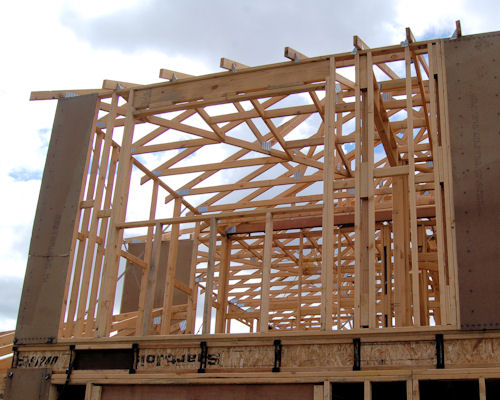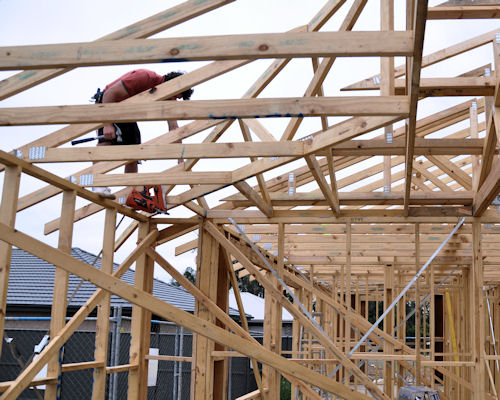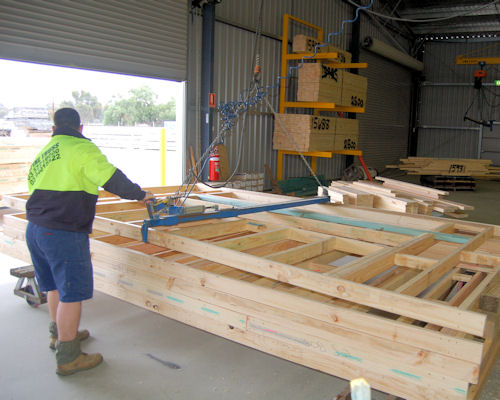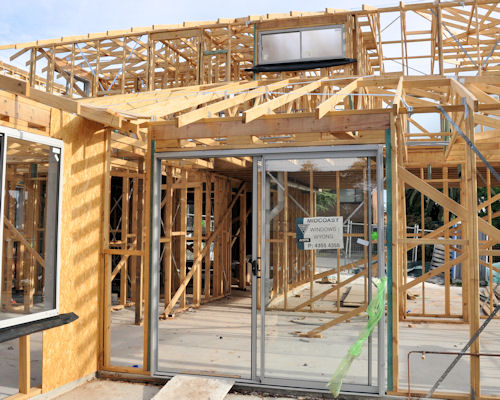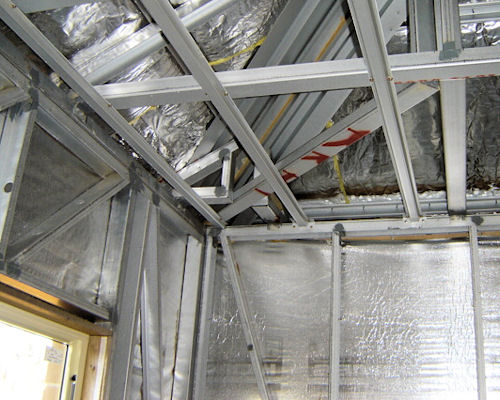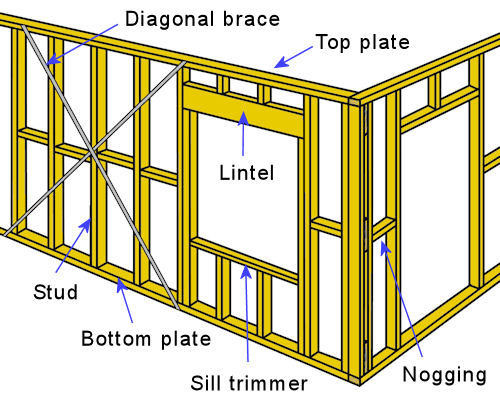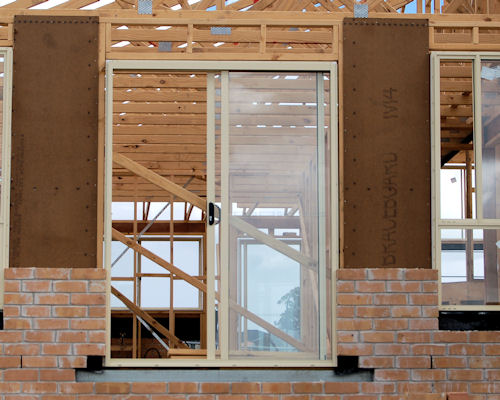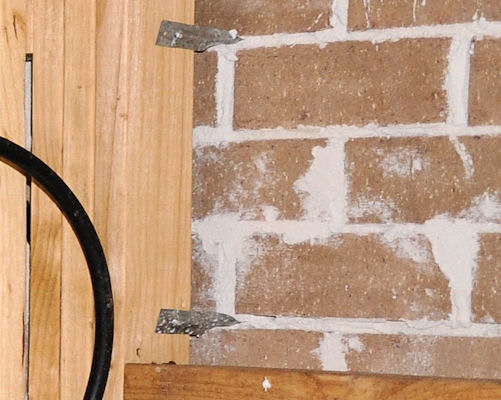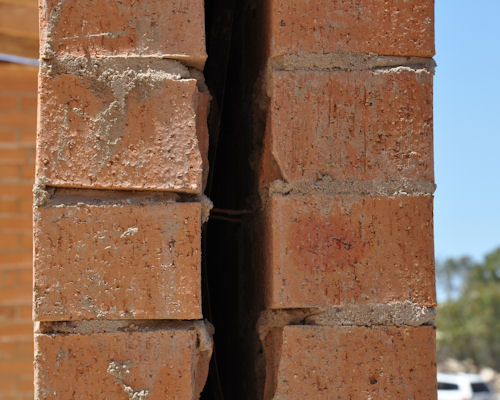External walls
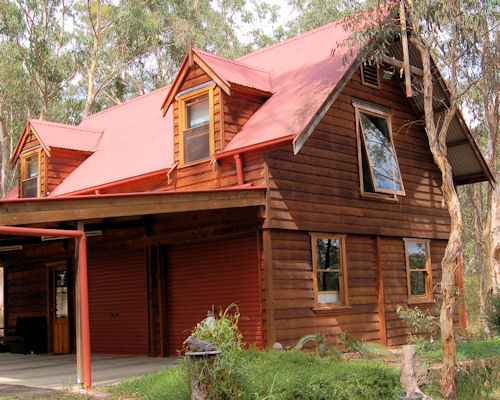 Audio for slide 5 (mp3 |6|KB)
Audio for slide 5 (mp3 |6|KB)
Sometimes plywood or fibre cement sheeting is used instead of weatherboard.
In all cases, the cladding is generally nailed to the timber wall frame with a waterproofing membrane in between.

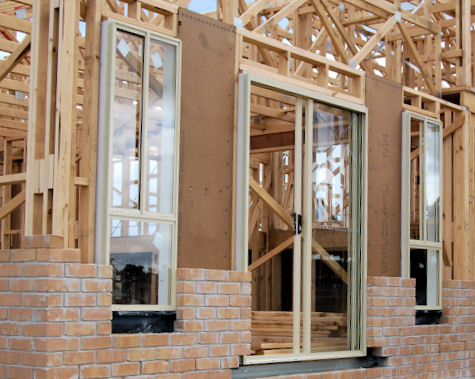 Audio for slide 9 (mp3 |6|KB)
Audio for slide 9 (mp3 |6|KB)
Brick veneer
A brick veneer wall is basically a timber frame (or steel frame) with a brick skin on the outside. That is, the ceiling and roof are still supported by the frame, with the brickwork performing the function of an external cladding.
Brick veneer construction was developed in Australia, and has become far and away the most popular construction method for residential dwellings.


Learning activity
Audio 14 (mp3 |6|KB)Once an internal wall has been painted, it's sometimes hard to tell at a glance whether it is made of solid plaster over masonry, or plasterboard sheets fixed to a timber frame. But there is an easy way to find out - just tap the wall with your fingers. If it's got the drummy sound of plasterboard on a hollow frame, then that's what it is.
You can also use this technique to find out exactly where the studs are in a wall frame. Tap along the wall with your fingers until the drummy sound becomes deadened. Chances are that's where the stud will be.
But beware! Don't forget that the wall frame will have noggings, which might also deaden the sound. And also keep in mind that sometimes the plasterboard lifts away from particular studs because either the glue didn't stick properly or the stud wasn't perfectly straight - which means that it might sound hollow right across the face of the stud.
The best way to reduce this problem is to press against the wall with your other hand, so that you push the plasterboard hard against the studs while you're tapping.
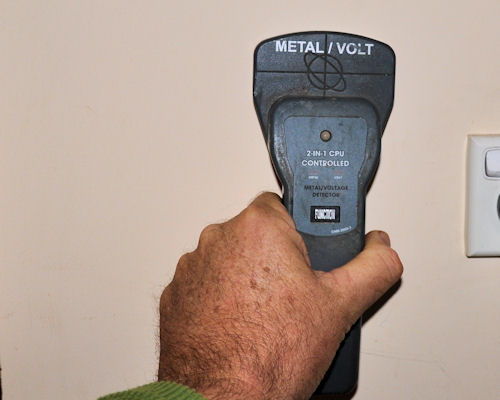
Of course, the high-tech alternative to this technique is to use a stud finder. This is a hand-held electronic unit that measures the electrical capacitance in the wall and detects where the changes are. Some newer stud finders send out a radar signal.
But the old fashioned technique is still a very handy one to know. Try it out for yourself on a few plasterboard walls.



